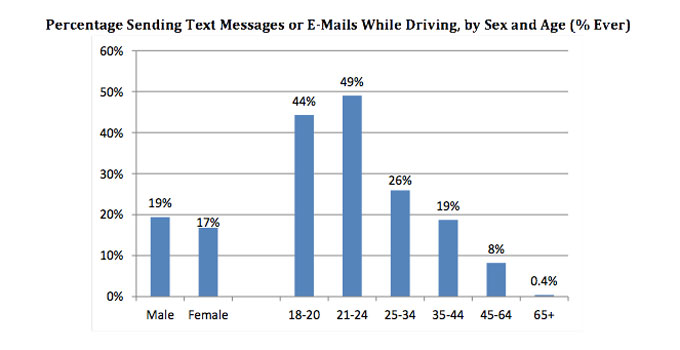A new national coalition will now focus on lowering the number of distracted driving-related accidents throughout the country more strongly than ever.
Various safety organizations launched the National Distracted Driving Coalition as a clearinghouse for state and local safety groups, an effort that will work to progress new legislation related to distracted driving behaviors and boost collaborative efforts that aim to raise awareness into these kinds of risky driving practices.
“Distracted driving kills thousands in the U.S. every year,” said the National Transportation Safety Board last month in a tweet. “During the National Distracted Driving Coalition launch, Vice Chairman [Bruce] Landsberg urged the public, community leaders, and industry to get engaged and involved in the fight to end distracted driving.”
The coalition of more than 100 members will work toward improved enforcement, data collection, and public education as a method of increasing safe driving behaviors.
“Every few hours, a life is lost on the nation’s highways due to distracted driving,” said Landsberg. “In no other mode of transportation would we accept the kind of carnage that we have on our highways.”
Along with NTSB, other main committee groups include the National Highway Traffic Safety Administration, the Federal Motor Carrier Safety Administration, American Trucking Associations, the National Sheriffs’ Association, the Governors Highway Safety Association, and the Insurance Institution for Highway Safety.
“We know that ensuring safe driving behavior is key in improving highway safety, and perhaps no action would do more for the cause of safety than reducing distractions for drivers,” said President of ATA, Chris Spear. “America’s truckers see motorists on their phones while driving countless times a day, and if a driver is focused on a text or call, we know they aren’t focused on driving safely.”
ATA also noted the vitality of accurate data in order to properly measure the extent of distracted driving behavior issues. The group also shared that it would prioritize the preparation of legislative briefs to help move along new related bill measures.
“Distracted driving kills thousands and injures hundreds of thousands in the United States every year,” NTSB’s Landsberg added. “States are making some progress addressing this public health problem, but no state has implemented NTSB recommendations calling for a ban on the use of all personal electronic devices while driving except in [the] case of emergency.”
Distracted driving initiatives should also be approached with the same vigor as initiatives working to bring an end to driving under the influence of drugs and alcohol, noted Drive Smart Virginia’s executive director, Janet Brooking.
“When we fund impaired driving programs, we should also be funding distracted driving programs,” she said. “When we make strong impaired driving laws with great ease, we should also be able to advance distracted driving legislation.”
StopDistractions.org CEO Jennifer Smith agreed, noting that distracted driving tends to be overlooked when analyzing driver behavior-related accidents.
“When we talk about the rising number of crashes, we hear about speeding, seat belts, and impaired driving,” she said. “But distracted driving is not mentioned. Have we given up? Is it too hard? Is it inconvenient? Why are we not doing as much as were back a decade ago?”
In regards to studies that have been conducted regarding distracted driving, driver inattention is typically directly related to a higher risk of crashing–especially with events that cause a driver to do something physically in the vehicle while looking away from the road, explain Virginia Tech Transportation Institute research scientist, Charlie Klauer.
“We are very proud to be a part of this coalition to assist in this very multi-pronged approach to reduce fatalities and injuries on our roadways that are due to distracted driving,” Klauer said.
Committee member Representative John Carson of Georgia helped pass a cellphone bill in 2018 that called for hands-free phone usage only for a driver in a moving vehicle, and has been working with legislators in many other states to urge them to do the same.
“In addition to state law, what we want to do is change the culture,” explained Carson. “Years ago, driving while intoxicated by alcohol was not as socially taboo as it is today. That’s where we want to get to with regard to distracted driving.”




